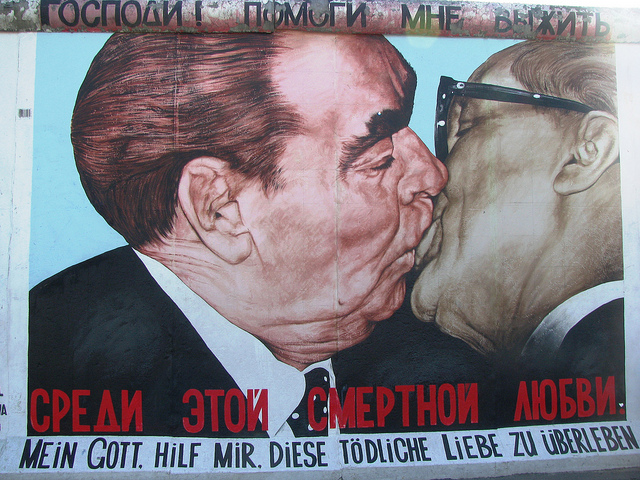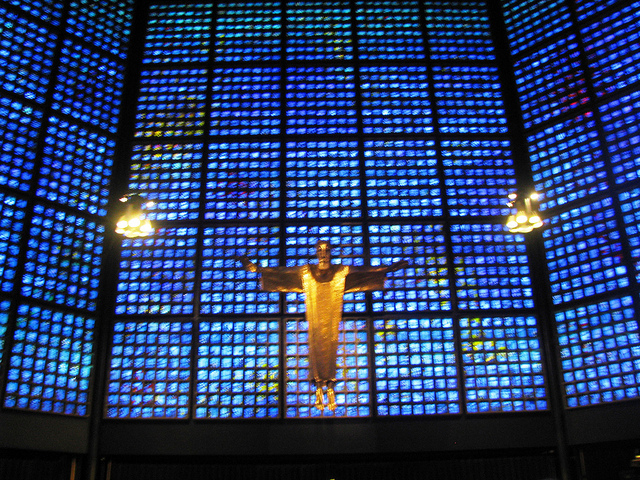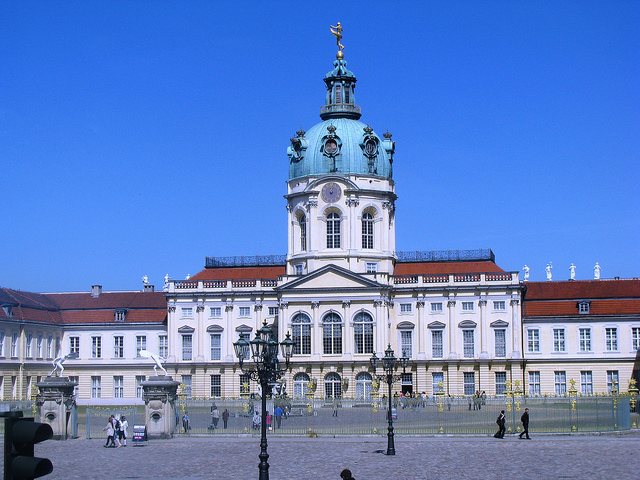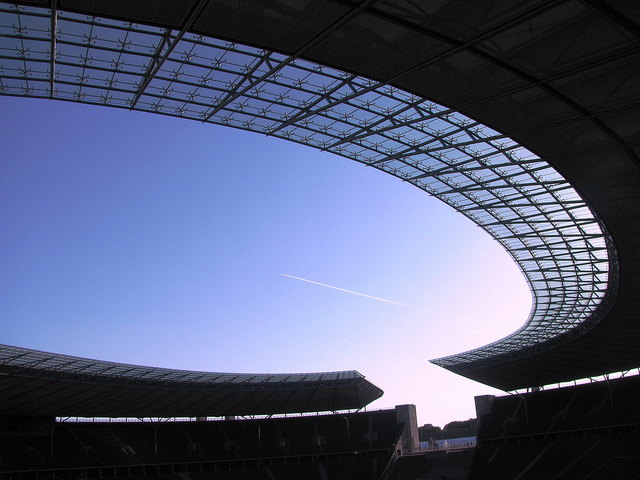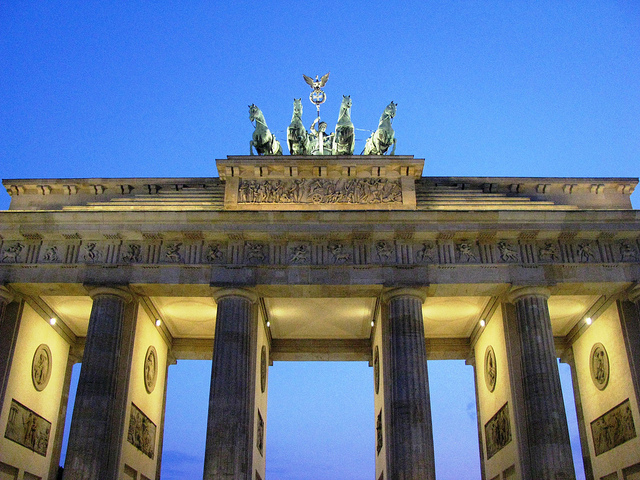Regardless of what city I am in, I always try to go on a bicycle tour to get to know some of the main sights and some less well-known hidden-away places that are not listed in every guidebook. The best way to explore a new city is with a local guide, and that’s why I had approached Berlin on Bike, a local company that offers guided bicycle tours, to see if they would be able to show me some of Berlin’s unique spots.
On a somewhat chilly but sunny morning of May 1, 2011 I took the subway to the Prenzlauer Berg neighbourhood of Berlin. My destination was the “Kulturbrauerei” – the “Culture Brewery” which is home to Berlin on Bike, one of the city’s most popular bicycle touring company. A brewery has stood here since 1842 and today’s huge red brick complex was Berlin’s largest brewery in the late 1900s. Since 1974, the 25,000 square metre (270,000 square foot) complex has been historically protected and today it is home to various cultural institutions such as cinemas, theatres, dance clubs and event facilities. Even famous bands such as Green Day and Rammstein, a Berlin-based industrial metal band, have played here.

My expert guide today was Stefan Danziger, who has lived in Berlin for several years and become a passionate fan of the city. We were about to embark on our six-hour tour of East Berlin when I had a chance to catch up with Martin “Wollo” Wollenberg, the founder of this bicycle touring company. I learned that Berlin on Bike has been in operation since 2004 and originally started with 16 bikes and 10 guides which today have grown into 400 bicyles and 50 experienced bicycle guides.
With his extensive local experience as a taxi and coach driver, Wollo got the idea to run his own bicycle company when he had friends visiting from New Zealand whom he showed around by bicycle. Today his company offers a variety of tours, such as the Berlin Wall Tour, Berlin’s Best, the East Unplugged, Kreuzberg and the Spree and Berlin’s Oases. My personal tour today was going to focus on two different topics: East Berlin and some of the city’s parks and green spaces.

Stefan and I got going on our comfortable bikes and started our ride through the Prenzlauer Berg neighbourhood. Our first stop was on Helmholtzplatz, a pretty leafy square with a children’s playground where Stefan explained that this entire area is only about 150 years old. Berlin grew immensely between about 1860 and 1914 and reached a population of about 4.5 million people in the 1920s. The German capital represented the second largest industrial centre in all of Germany, after the Ruhr Region. To deal with the onslaught of migrants moving into the city from the countryside, the city built countless tenement buildings, usually 4 to 5 stories high. Several tenement buildings were usually connected with one another via inner courtyards; the building in the front facing the street was the most spacious and geared towards more affluent tenants while the buildings behind became continuously smaller and less luxurious.
The inner courtyard had to be at least large enough for one of the fire department’s horse-drawn carriages to turn around. During the heyday of the Industrial Revolution, living conditions were very tough; often there were up to 30 people living in one small apartment and sleeping space was rented out by the hour to “bed lodgers”. Stefan explained that the good thing about Berlin’s tenement housing strategy was that the tenants in the same complex came from mixed economic backgrounds which prevented a concentration of only low-income renters. As a result of this mixed income housing strategy, Berlin was able to avoid some major social tensions that had afflicted so many other European cities of that era.
Just a few hundred metres away we stopped at the Gethsemanekirche, the most important Lutheran church in the Prenzlauer Berg district. Built between 1891 and 1893 with a mix of Romanesque and Gothic design elements, this church played a critical role during the Peaceful Revolution that brought about the fall of Communism in Europe. In October of 1989 this church opened its gates 24 hours a day for public discussions and candle illuminations. On October 7, 1989, East Berlin police and Stasi (secret police offers) used violence to crack down on demonstrators in a nearby street, many of whom fled into the church. The Gethsemanekirche became an important part of the civil rights movement that led to the fall of the Berlin Wall.

A few minutes further we stopped on a railway bridge and had an actual look at one of the tenement houses that were so ubiquitous in late 19th century Berlin. We saw four tenement buildings, the front one being the largest. All four buildings were connected with one another through interior courtyards. When they were originally built they did not have sanitation and it was only in the 1920s that these buildings were retrofitted with shared toilets in the hallways or stairwells.
Looking at the S-Bahn or Schnellbahn, Berlin’s mostly above-ground urban rapid transit system, Stefan commented that during the Cold War years when the city was divided by the much hated Berlin Wall, free movement of East and West Berlin citizens was brought to an end by the GDR government. Residents of the northern part of West Berlin had to take the long way around to get to the southern sections of their city because the centre of the city was part of the Soviet-controlled sector. After the Berlin Wall was built in 1961, the north-south service in West Berlin passed through a stretch of East Berlin territory without making any stops. The subway stations in those areas were called “ghost stations” – they were dimly lit and heavily guarded by security forces. East Berliners had no access to these train stations, and West Berlin trains just drove through without stopping.

Berlin’s Cold War history became even clearer when we stopped at the Bösebrücke, a historic bridge that led to the Bornholmer Straße border crossing which connected West Berlin’s Wedding district with East Berlin’s Prenzlauer Berg district. On the 9th of November, 1989, thousands of GDR citizens had congregated following a press conference that they would receive the freedom to travel, and amidst a very confusing situation, senior border officer Harald Jäger opened the border and allowed East German residents to travel into West Berlin.
This was the first place where the Berlin Wall was opened and little later that night East and West Berliners congregated on the Berlin Wall to celebrate the fall of this much-hated structure that had kept Berlin citizens apart for more than 28 years. One of the 20th century’s most significant events unfolded right here at this bridge, and several large photo exhibits commemorate this turning point of history.

